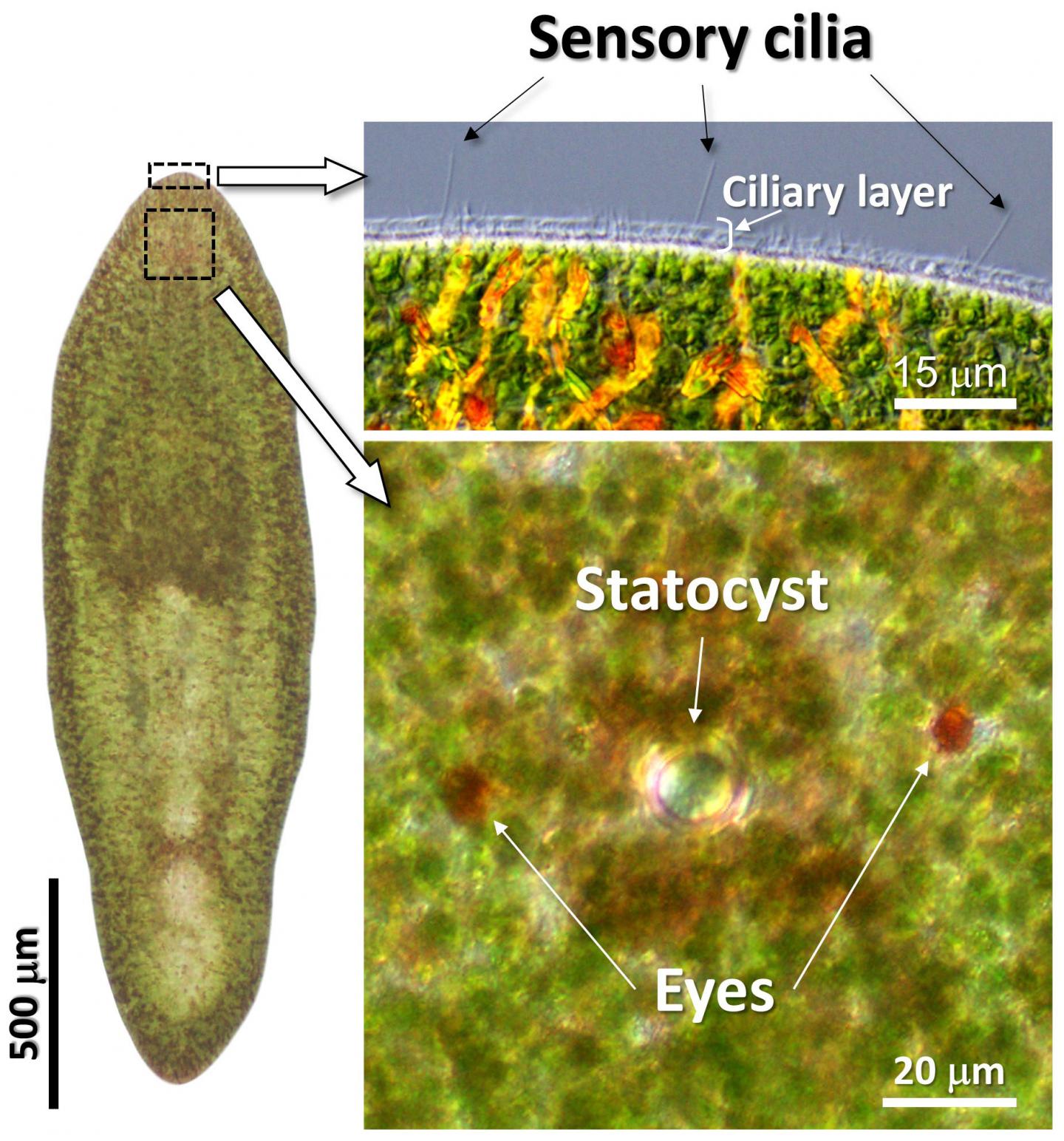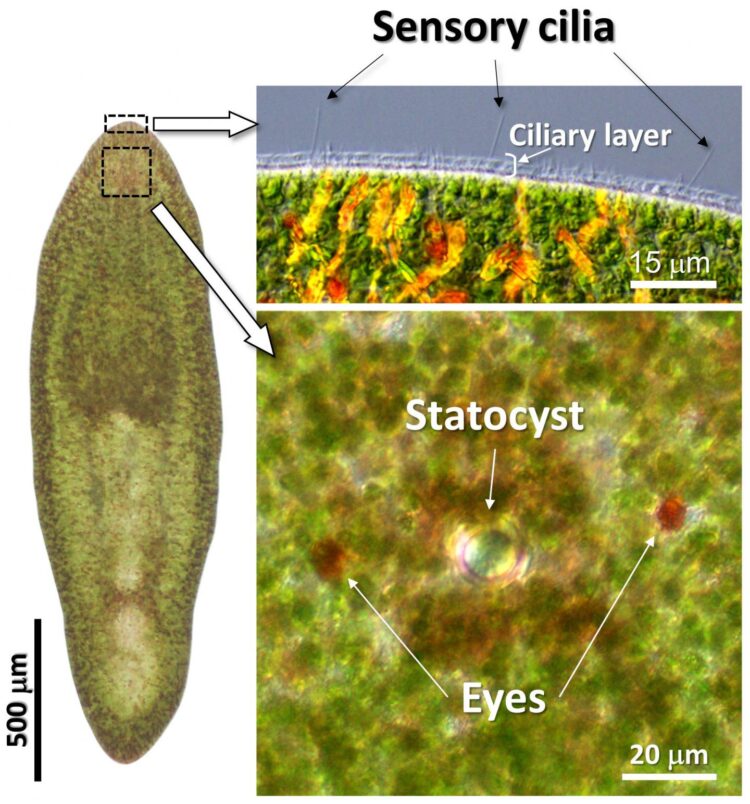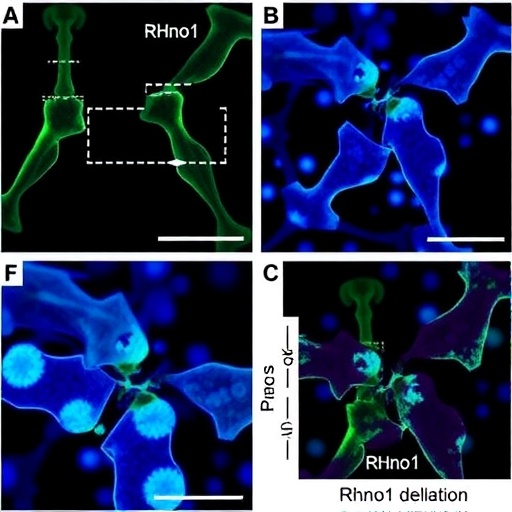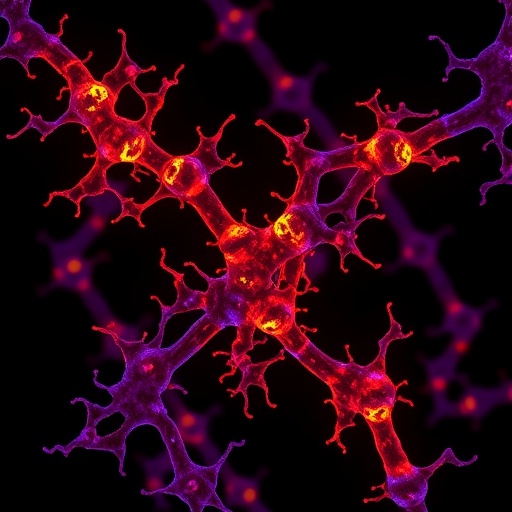Zoologists explore the mechanism and development of gravity-sensing ability in marine acoel flatworms

Credit: 2021 Okayama University
All living organisms are equipped with sensory organs to detect changes in their surrounding environment. It may not immediately strike us as obvious but, similar to how we can sense heat, cold, light, and darkness, we are also extremely adept at sensing gravity. In our case, it is our inner ear that does this job, helping us maintain balance, posture, and orientation in space. But, what about other organisms, for instance invertebrates that lack a backbone?
The gravity sensing organ in some aquatic invertebrates, known as a “statocyst,” is, in fact, rather fascinating. The statocyst is essentially a fluid-filled sac with sensory cells lining its inner wall and a small, mineralized mass called “statolith” contained inside. During any body movement, the statolith moves and consequently comes in contact with sensory cells in the inner wall, deflecting them. The deflections, in turn, activate the neurons (nerve cells), which then relay signals to the brain about changes in body orientation.
However, exactly how the sensory cells stimulate the neurons is not particularly clear for acoel flatworms–soft-bodied, marine animals with a simple anatomy, which represent one of the earliest extant life forms with bilateral (left-right) symmetry. What zoologists know so far, based on the finding that juvenile acoel flatworms occasionally fail to sense gravity, is that the ability is acquired sometime after hatching from the eggs.
In a new study published in Zoomorphology, scientists from Okayama University, Japan led by Prof. Motonori Ando have now taken a stab at understanding these curious creatures better. But what exactly is so attractive about acoel flatworms? Prof. Ando explains, “Understanding the stimulus response mechanism of Acoela can uncover a fundamental biological control mechanism that dates back to the origin of bilaterian animals, including humans. These organisms, therefore, are key to unravelling the process of evolution.”
For their study, the scientists used an acoel species called Praesagittifera naikaiensis or P. naikaiensis that is endemic to the Seto Island Sea coasts at Okayama. “The mysterious body plan of P. naikaiensis could be key to connecting Okayama and the world’s natural environment,” says Prof. Ando.
To examine the relationship between the statocyst and nervous system of P. naikaiensis, the scientists had to make them both visible, a task usually accomplished by a “marker” or a “label.” However, due to a lack of any suitable label for the statocyst, they adopted a different strategy in which they labeled instead the basal lamina, the layer on which the sensory cells sit. As for the nervous system, they labeled the nerve terminals using a well-known marker. Finally, they studied the specimen using confocal microscopy, a technique in which light is focused on to a defined spot at a specific depth to stimulate only local markers.
The results were illuminating. The scientists found that the acoel flatworm developed a gravity-sensing ability within 0 to 7 days after hatching, with the statolith forming after hatching. The statocyst comprised longitudinal and transverse nerve cords, forming what is called a “commissural brain” and a “statocyst-associated-commissure” (stc) characterized by transverse fibers. They hypothesized that a gravity-sensing ability developed when: 1) the statolith acquired a sufficient concentration of calcium salts, 2) stc functioned as the signal-relaying neurons, and 3) the sensory cells were present outside the sac and stimulated indirectly by the statolith through the basal lamina and stc.
Inspired by these findings, Prof. Ando has envisioned future research directions and even practical applications of their study. “It has been reported that closely related species of this organism inhabit the North Sea coast, the Mediterranean coast, and the east coast of North America. Since there is great interest about the commonality of their habitats, we can extend our research to a more global level, using these animals as a novel bioassay system for the environment they live in, especially in the face of the accelerated pace of climate change and anthropogenic habitat degradation. Furthermore, acoel flatworms could be an excellent biological model for studying diseases caused in humans due to abnormalities of sensory hair cells,” says an excited Prof. Ando.
It seems modern science is just warming up to the myriad mysteries of this minute worm!
###
Media Contact
Okayama University
[email protected]
Related Journal Article
http://dx.





